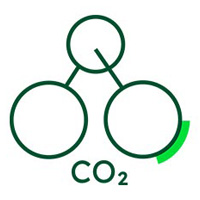Sustainability
At Heidelberg Materials, we’re transforming our business to address the world’s need for more sustainable and resilient infrastructure and buildings. Our Sustainability Commitments 2030 support our vision to build a more sustainable future that is net zero, safe and inclusive, nature positive, and circular.
We are committed to being a low carbon cement company that contributes to the welfare of our society today and in the future. A large part of that commitment involves promoting sustainable construction wherever and whenever possible whether that be circular construction or providing low-carbon building materials like our Revolve™ Recycled Aggregates, blended cements, EcoCem®PLUS, EcoCem®PLC, TX Active® photocatalytic cement, and EvobuildTM Low Carbon Concrete. As we focus on more sustainable concrete, we have developed product specific environmental product declarations (EPDs).
Heidelberg Materials is dedicated to operating in a safe and environmentally responsible manner. Heidelberg Materials actively advocates for the use of resilient construction materials and supports sustainable construction practices. We advocate for science-based research to drive innovation and deliver long-term results. Our labs are busy working on the next generation of sustainable building materials that will have a lower environmental footprint and bring us closer to our net zero goal.
We are committed to supporting Green Building Councils and local and national industry trade associations to lead the development of sustainable solutions for built environments. We believe that a collaborative effort with stakeholders is a quicker path to developing new technologies that can make an immediate impact to lower Global Warming Potential (GWP).
Heidelberg Materials is an early leader in sustainability through our participation in the Cement Sustainability Initiative (CSI). We're dedicated to providing sustainable cement, concrete, and other building materials that have a positive impact on society and the environment – both during and after their service life.
We work hard to reflect this commitment in as many ways as we can by:
- Promoting best practices in sustainable construction
- Working to improve energy efficiency in the production and transportation of materials
- Ensuring durability, especially in projects where product failure could impact the environment
- Adopting impact rating systems to set new benchmarks
- Continually investing in new technologies
- Finding innovative ways to take recycling and product life cycles to new limits
Revolutionizing the Cement Industry with Carbon Capture
See more about our CCUS projects in Edmonton & Mitchell- and learn more about how we can shape a better world through innovation, sustainability, and a shared commitment to a Net Zero future.
Sustainability Commitments 2030
Heidelberg Materials' Sustainability Commitments for 2030 define the key topics and core principles of the sustainability strategy. We have aligned our Sustainability Commitments with the UN's Sustainable Development Goals UN's Sustainable Development Goals (SDG). The SDGs aim to end extreme poverty, fight injustice and protect our planet with 17 goals set out for 2030.
Our Sustainability Commitments for 2030 focused on four key ideas to encompass the SDGs goals.

Building a Net Zero Future
We are driving the decarbonization of our sector and providing low-carbon products.

Building a Safe and Inclusive Future
At Heidelberg Materials, we place the health and wellbeing of our employees, communities, and suppliers at the core of business operations.

Building a Nature Positive Future
We contribute to a nature positive world through our industry-leading biodiversity program and sustainable water management.

Building a Circular and Resilient Future
Reducing and reusing materials and natural resources to drive circularity.

